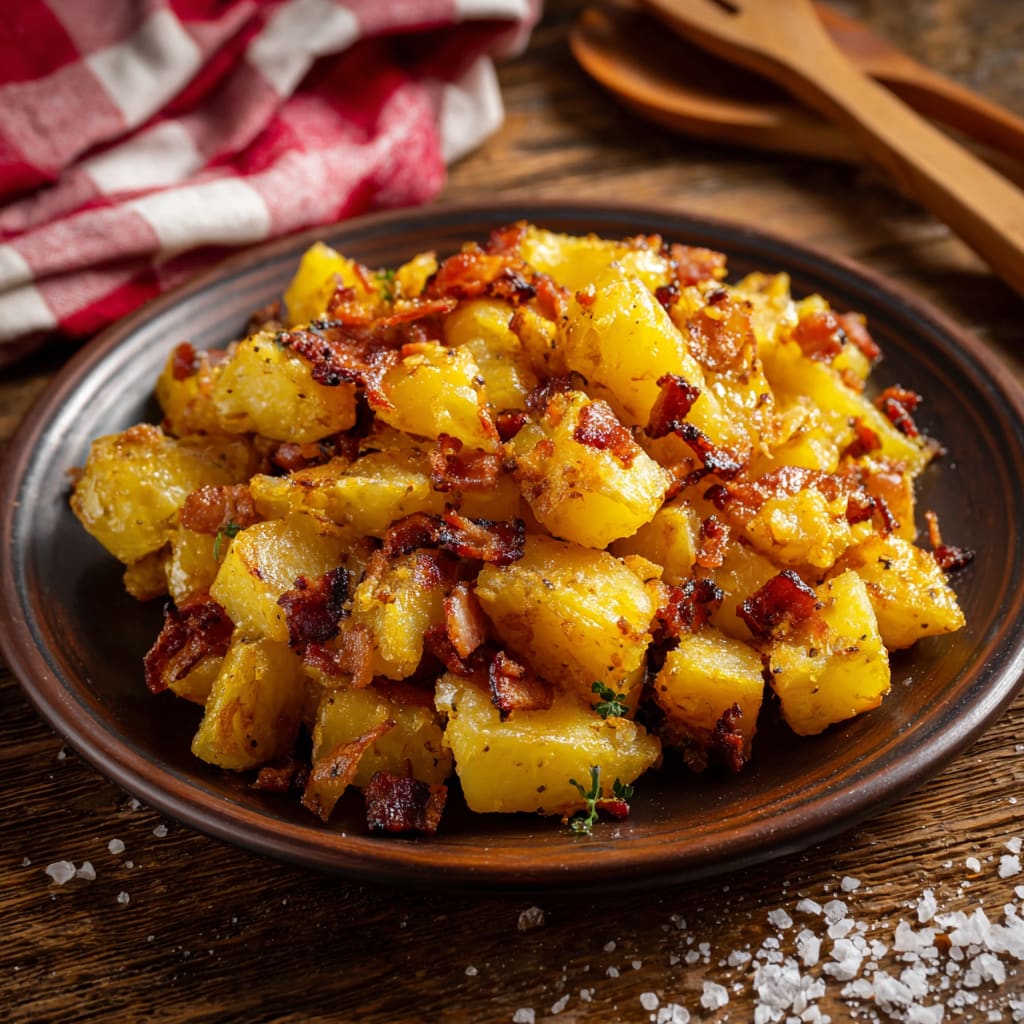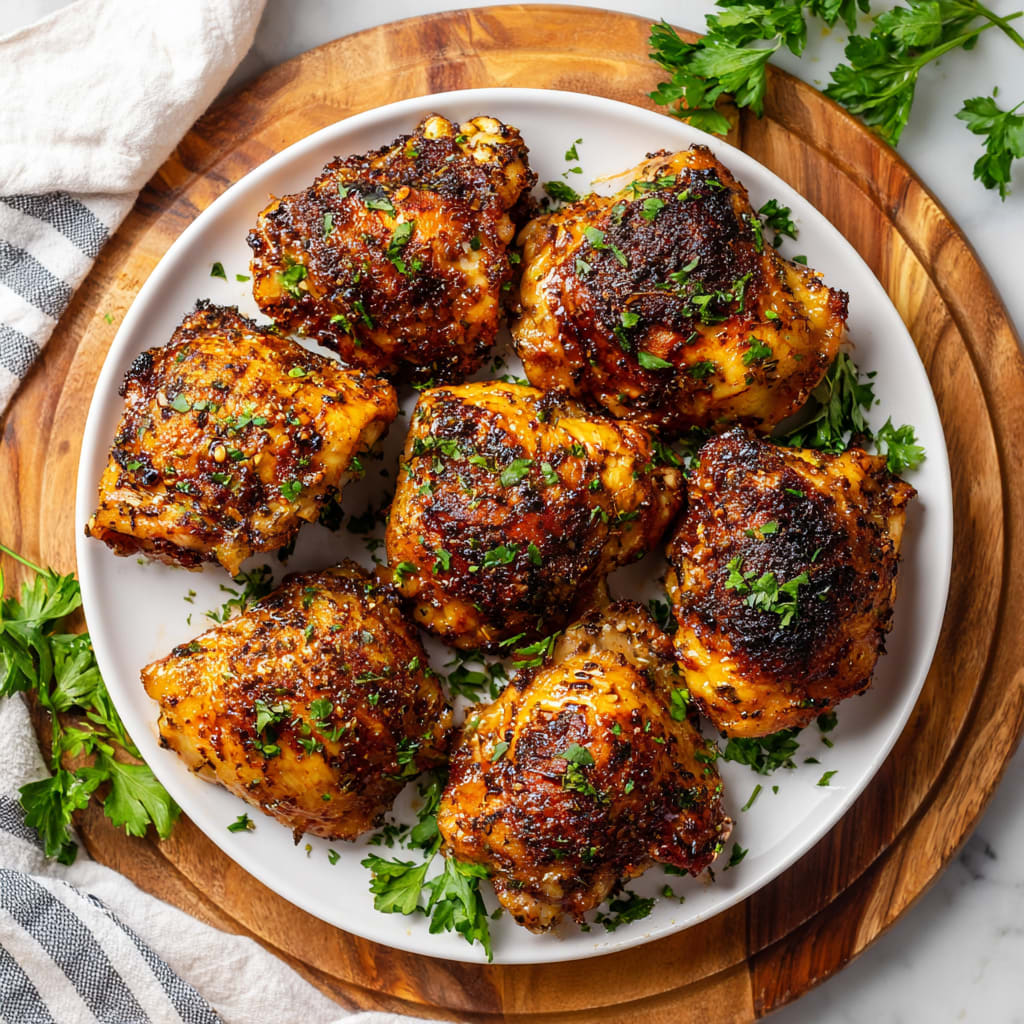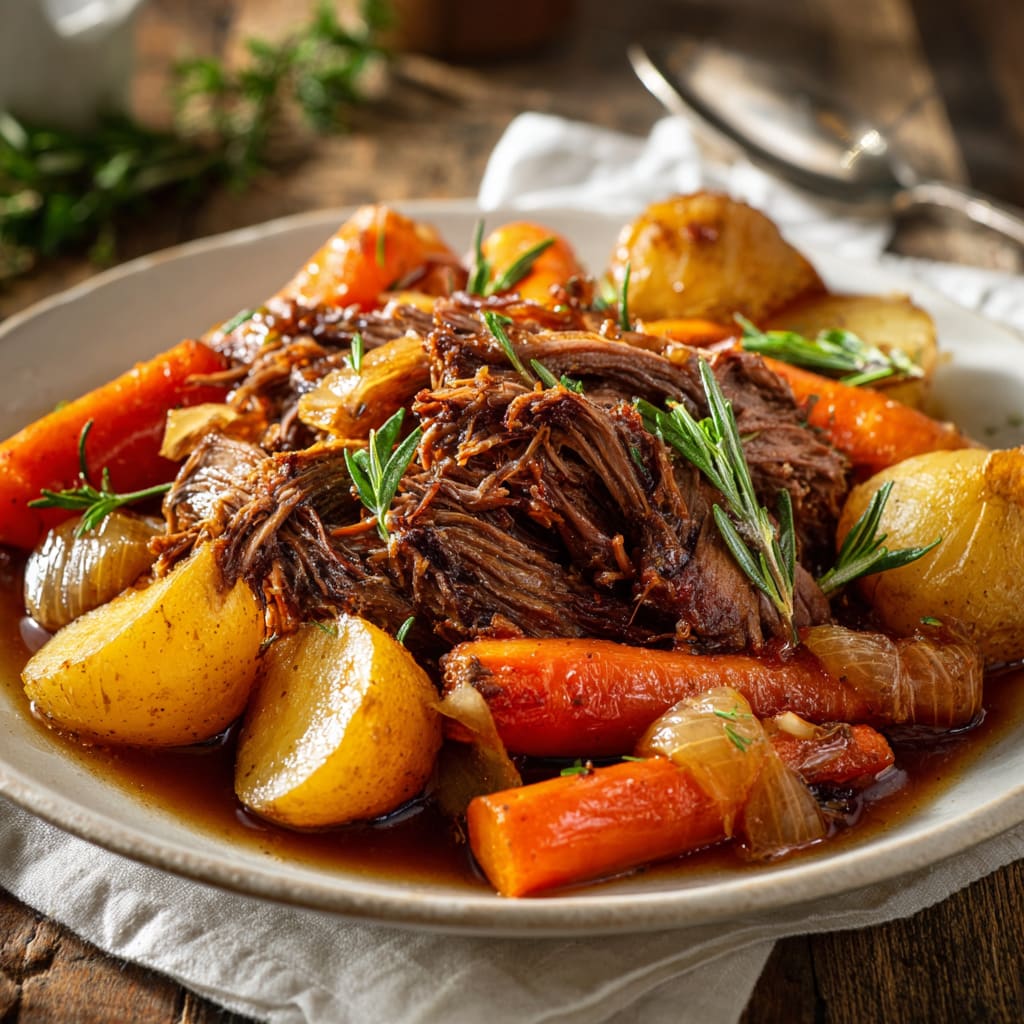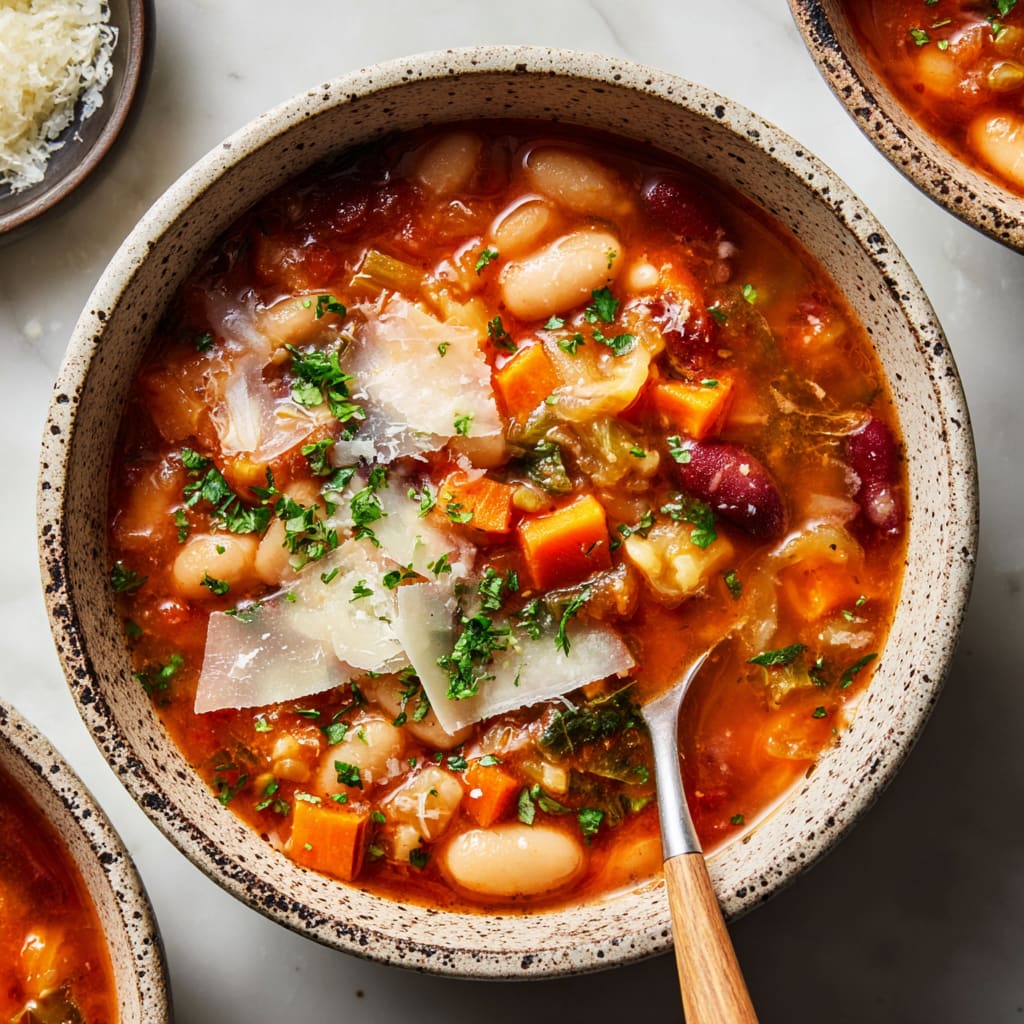Tender, juicy chicken bathed in a rich, glossy balsamic glaze that clings to every bite—balsamic chicken transforms everyday poultry into a restaurant-worthy meal with minimal effort. The tangy-sweet sauce creates an irresistible caramelized exterior while keeping the chicken incredibly moist and flavorful. You’ll learn how to create the perfect balance of flavors and achieve that coveted sticky glaze that makes this balsamic chicken an absolute showstopper for any dinner table.
Why You’ll Love This Recipe
This balsamic chicken recipe deserves a permanent spot in your weeknight rotation for so many reasons. First, the incredible depth of flavor that develops in just 30 minutes will make everyone think you spent hours in the kitchen. The magical transformation that happens when balsamic vinegar reduces—turning from a thin, sharp liquid into a thick, sweet-tangy glaze—creates a sauce that’s impossibly rich without added cream or butter.
The textural contrast is what makes this dish truly special: tender, succulent chicken beneath a sticky, caramelized exterior. Each bite delivers that perfect balance of savory protein with the complex sweetness of aged vinegar. Best of all, this balsamic chicken requires minimal prep work and simple ingredients you likely already have in your pantry. It’s elegant enough for entertaining but easy enough for hectic weeknights when you need dinner on the table without fuss.
Ingredients
For this balsamic chicken recipe, you’ll need:
- 4 boneless, skinless chicken breasts (about 2 pounds/900g), pounded to even thickness
- 3 tablespoons olive oil, divided (45ml)
- 1 teaspoon kosher salt (5g)
- ½ teaspoon freshly ground black pepper (2g)
- 1 teaspoon dried Italian herbs (3g)
- 3 cloves garlic, minced (about 1 tablespoon/9g)
- ½ cup high-quality balsamic vinegar (120ml) – look for “Aceto Balsamico di Modena” for the best flavor
- 2 tablespoons honey or maple syrup (30ml)
- 1 tablespoon Dijon mustard (15g)
- 2 sprigs fresh rosemary
- 2 tablespoons cold butter, cubed (28g)
- Fresh basil or parsley for garnish, chopped
The balsamic vinegar is the star ingredient here—opt for a good quality one that’s thick and naturally sweet rather than thin and overly acidic. The honey or maple syrup helps enhance the natural sweetness of the reduced balsamic while the Dijon mustard adds depth and helps emulsify the sauce.
Pro Tips
For truly exceptional balsamic glazed chicken, these three techniques will elevate your dish from good to unforgettable:
First, properly pounding the chicken breasts ensures even cooking and maximum tenderness. Place each breast between two sheets of plastic wrap and gently pound with a meat mallet or heavy skillet until they’re a uniform ½-inch thickness throughout. This step prevents dry, overcooked spots while ensuring the thicker parts cook through perfectly.
Second, master the art of developing fond—those caramelized brown bits on the pan after searing the chicken. These flavor-packed morsels dissolve into your balsamic sauce, creating incredible depth. To maximize fond development, pat the chicken completely dry before seasoning, use a stainless steel or cast iron pan (not non-stick), and resist the urge to move the chicken while it sears.
Finally, the secret to a luxurious balsamic glaze is patience during reduction. Allow the vinegar mixture to simmer gently until it coats the back of a spoon—about 5-7 minutes. Watch carefully as it thickens, as the sugar content can cause it to burn quickly. The perfect glaze should be syrupy but still fluid, reducing by approximately half its original volume.
Instructions
- Prepare the chicken by patting it dry with paper towels. Using a meat mallet or heavy pan, pound the chicken breasts between two sheets of plastic wrap until they reach an even ½-inch thickness.
- Season both sides of the chicken breasts generously with kosher salt, black pepper, and the dried Italian herbs, pressing the seasonings into the meat to adhere.
- Heat 2 tablespoons of olive oil in a large skillet over medium-high heat until shimmering. When the oil is hot but not smoking, add the chicken breasts to the pan without overcrowding (work in batches if necessary).
- Sear the chicken for 5-6 minutes on the first side without moving it—this ensures a golden-brown crust develops. Flip and cook for another 4-5 minutes on the second side until the internal temperature reaches 165°F (74°C). Transfer the cooked chicken to a clean plate and tent loosely with foil to keep warm.
- Reduce the heat to medium and add the remaining tablespoon of olive oil to the same pan. Add the minced garlic and cook for just 30 seconds until fragrant, being careful not to let it burn.
- Pour in the balsamic vinegar, honey or maple syrup, and Dijon mustard, using a wooden spoon to scrape up all the flavorful browned bits from the bottom of the pan. Add the rosemary sprigs and bring the mixture to a simmer.
- Allow the balsamic mixture to simmer and reduce for about 5-7 minutes, stirring occasionally, until it thickens enough to coat the back of a spoon. The sauce should reduce by approximately half its volume and take on a glossy appearance.
- Remove the pan from heat and discard the rosemary sprigs. Swirl in the cold butter cubes one at a time, stirring constantly until the sauce is silky and emulsified. This technique, called mounting with butter, creates a velvety texture and adds richness to the glaze.
- Return the chicken and any accumulated juices to the pan, turning each piece to coat thoroughly in the balsamic glaze. Allow the chicken to warm through in the sauce for 1-2 minutes.
- Transfer the balsamic chicken to serving plates, spoon additional glaze over the top, and garnish with freshly chopped basil or parsley before serving.
Variations
This versatile balsamic chicken recipe can be adapted in several delicious ways to keep your meals exciting. For a Mediterranean twist, add a handful of halved cherry tomatoes and crumbled feta cheese during the last few minutes of cooking. The tomatoes will burst slightly, releasing their sweet juices into the balsamic glaze, while the feta adds a tangy, creamy element that beautifully complements the sweet-tart sauce.
For a heartier, autumn-inspired variation, add thinly sliced apples and a sprinkle of fresh thyme to the pan when making the sauce. The apples soften slightly while maintaining some texture, and their natural sweetness enhances the balsamic reduction. This version pairs particularly well with roasted root vegetables or a simple wild rice pilaf.
For those following a dairy-free diet, simply omit the butter finish and instead add a tablespoon of nutritional yeast to the sauce for umami depth. You can also substitute coconut oil for butter to maintain that silky texture while keeping the dish completely dairy-free. The end result is equally delicious with a slightly different flavor profile that works beautifully with the balsamic chicken.
Storage and Serving
Balsamic chicken keeps beautifully, making it perfect for meal prep or next-day leftovers. Store any cooled leftovers in an airtight container in the refrigerator for up to 3 days. When reheating, add a splash of chicken broth to the pan to refresh the sauce and prevent the chicken from drying out. Heat gently over medium-low until just warmed through.
For a complete meal, serve this balsamic chicken alongside creamy mashed potatoes or polenta, which provide the perfect canvas for soaking up the extra sauce. The sweet-tangy flavors of the glaze also pair wonderfully with roasted vegetables like Brussels sprouts, asparagus, or butternut squash.
For an elegant presentation, slice the glazed chicken breasts on a bias and fan them out on a serving platter. Drizzle with additional warm balsamic glaze and sprinkle with toasted pine nuts for a restaurant-quality finish. This serving style is particularly impressive for dinner parties or special occasions when you want to elevate a simple chicken dish to something truly memorable.
FAQs
Can I use bone-in chicken thighs instead of chicken breasts? Absolutely! Bone-in chicken thighs work beautifully with this balsamic glaze and often result in even juicier meat. Simply adjust the cooking time—bone-in thighs typically need 7-8 minutes per side when searing, plus a few extra minutes in the sauce to ensure they’re fully cooked to 165°F (74°C).
Why is my balsamic glaze not thickening? If your glaze isn’t reaching that perfect syrupy consistency, you likely need more reduction time. Continue simmering over medium heat, watching carefully. Remember that the sauce will thicken further as it cools. If you’re still having trouble, you can add an additional teaspoon of honey or maple syrup, which will help with caramelization and thickening.
Can I make this balsamic chicken recipe ahead of time? Yes! For best results, prepare the chicken and sauce separately up to a day ahead. Refrigerate both components, then gently reheat the sauce in a skillet until bubbling before adding the chicken to warm through. This method prevents the chicken from becoming overcooked while ensuring your glaze maintains its glossy texture.
Conclusion
This Balsamic Chicken is comfort food at its finest — elegant enough for company but simple enough for weeknights. The rich, glossy sauce transforms ordinary chicken into something truly crave-worthy with minimal effort. It’s the kind of dish that makes everyone at the table fall silent for those first few bites, followed by enthusiastic compliments to the chef
Print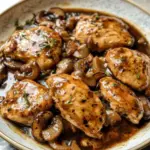
Balsamic Chicken Recipe
Description
30-minute Balsamic Chicken with chicken, balsamic vinegar, and garlic. Weeknight-friendly and packed with flavor!
Ingredients
- 4 boneless, skinless chicken breasts (about 2 pounds/900g), pounded to even thickness
- 3 tablespoons olive oil, divided (45ml)
- 1 teaspoon kosher salt (5g)
- ½ teaspoon freshly ground black pepper (2g)
- 1 teaspoon dried Italian herbs (3g)
- 3 cloves garlic, minced (about 1 tablespoon/9g)
- ½ cup high-quality balsamic vinegar (120ml) – look for “Aceto Balsamico di Modena” for the best flavor
- 2 tablespoons honey or maple syrup (30ml)
- 1 tablespoon Dijon mustard (15g)
- 2 sprigs fresh rosemary
- 2 tablespoons cold butter, cubed (28g)
- Fresh basil or parsley for garnish, chopped
Instructions
- Prepare the chicken by patting it dry with paper towels. Using a meat mallet or heavy pan, pound the chicken breasts between two sheets of plastic wrap until they reach an even ½-inch thickness.
- Season both sides of the chicken breasts generously with kosher salt, black pepper, and the dried Italian herbs, pressing the seasonings into the meat to adhere.
- Heat 2 tablespoons of olive oil in a large skillet over medium-high heat until shimmering. When the oil is hot but not smoking, add the chicken breasts to the pan without overcrowding (work in batches if necessary).
- Sear the chicken for 5-6 minutes on the first side without moving it—this ensures a golden-brown crust develops. Flip and cook for another 4-5 minutes on the second side until the internal temperature reaches 165°F (74°C). Transfer the cooked chicken to a clean plate and tent loosely with foil to keep warm.
- Reduce the heat to medium and add the remaining tablespoon of olive oil to the same pan. Add the minced garlic and cook for just 30 seconds until fragrant, being careful not to let it burn.
- Pour in the balsamic vinegar, honey or maple syrup, and Dijon mustard, using a wooden spoon to scrape up all the flavorful browned bits from the bottom of the pan. Add the rosemary sprigs and bring the mixture to a simmer.
- Allow the balsamic mixture to simmer and reduce for about 5-7 minutes, stirring occasionally, until it thickens enough to coat the back of a spoon. The sauce should reduce by approximately half its volume and take on a glossy appearance.
- Remove the pan from heat and discard the rosemary sprigs. Swirl in the cold butter cubes one at a time, stirring constantly until the sauce is silky and emulsified. This technique, called mounting with butter, creates a velvety texture and adds richness to the glaze.
- Return the chicken and any accumulated juices to the pan, turning each piece to coat thoroughly in the balsamic glaze. Allow the chicken to warm through in the sauce for 1-2 minutes.
- Transfer the balsamic chicken to serving plates, spoon additional glaze over the top, and garnish with freshly chopped basil or parsley before serving.




